Top 10 attractions of Stone Town
An absolute must during your holiday at Zanzibar is a visit to the enchanting Stone Town, the historic heart of Zanzibar city. It is not without reason that the city has been on the UNESCO World Heritage List since 2000. Just strolling through the narrow streets is a cultural experience in itself.
By the way, the name Stone Town refers to the limestone with which many buildings from this beautiful town were built. This limestone came from the coral reefs near Zanzibar. It is only since 1830 that ‘ordinary’ stones have been used in construction instead of limestone.
In this blog we have listed our top 10 sights for you. But first we’ll take you through the history of this oldest Swahili settlement in East Africa.
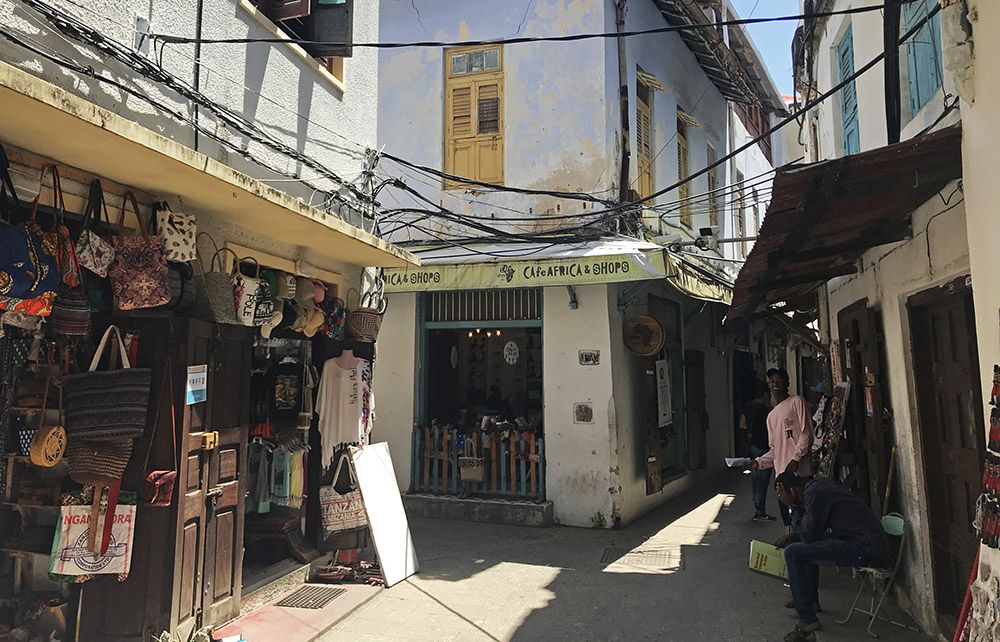
History of Stone Town
Exactly when Zanzibar was discovered is unclear. It is said that Arab traders took care of the first mosque around 1100. They called the inhabitants of the island from the mainland ‘zenj’, which means black. “Bar” means coast. It is assumed that the name Zanzibar comes from there: coast of the black people. But there are other theories.
In 1503, the Portuguese conquered the island. Towards the end of the 17th century, the Omani’s gradually took control of Zanzibar. They already served the entire East African coast from Mozambique to Somalia (also called Swahili coast). The island was then part of the sultanate of Oman.
In the 18th and 19th centuries many slaves were traded via Zanzibar. After the then reigning sultan Seyyid Said had signed a treaty not to sell any more slaves to countries with a Christian regime, the slaves came to work on the spice plantations. The island’s economy flourished.
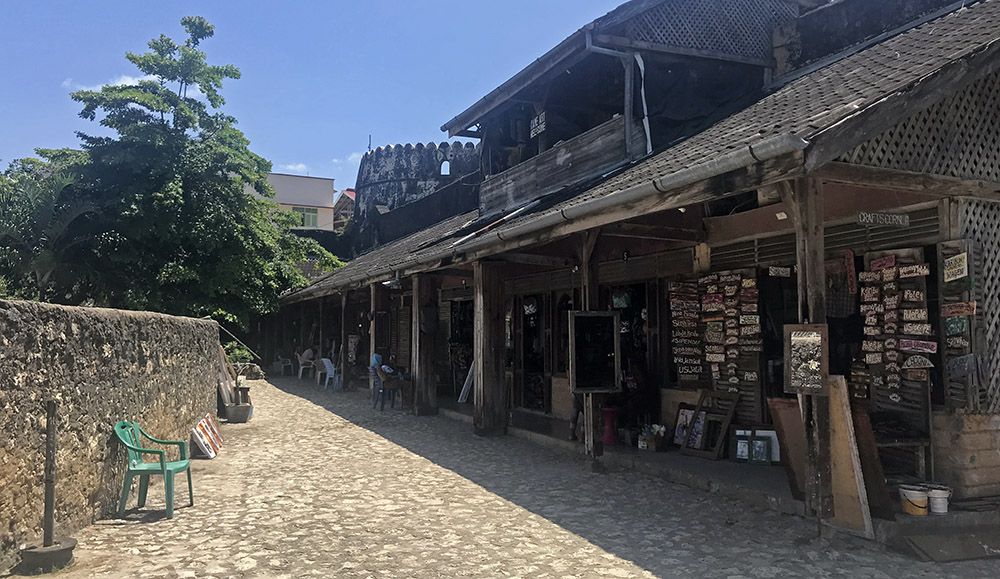
Capital of Oman
In 1840 Stone Town became the capital of Oman. During this time a number of large buildings were erected in the city. More and more migrants from South and East Asia settled in Stone Town, resulting in more variation in architecture.
This variation can be seen in the front doors. You can still see beautifully carved wooden Arabic doors with verses from the Koran carved into the wood in some of the houses. In the Kiponda district near the harbour where many Indians lived, many doors have excellent copper pins. In Stone Town these pins were there purely for decoration, but in India they were needed to keep out elephants.
The influence of British missionaries gradually increased in the 19th century. Eventually, in 1873, this led to the definitive abolition of slavery on Zanzibar. In Stone Town, the large slave market closed. On that spot the Anglican cathedral was built.
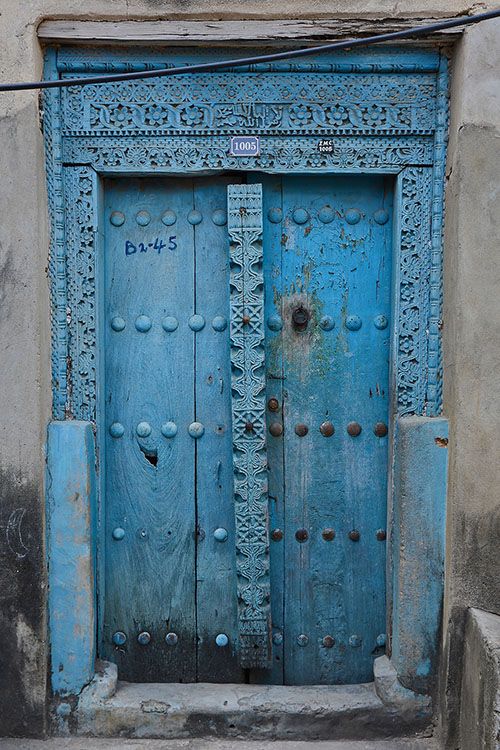
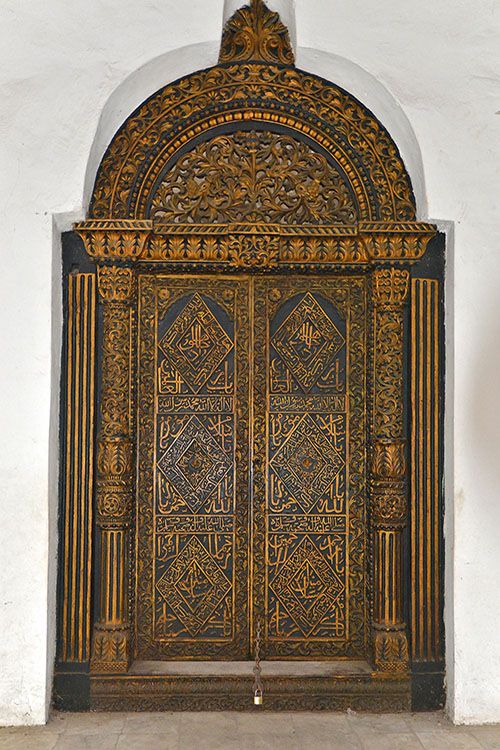
Our top 10 sights in Stone Town
Walking through the narrow streets of Stone Town
The heart of Stone Town is a maze (we got lost a few times there!) of narrow alleyways lined with houses, shops, sewing workshops, bazaars, restaurants, mosques, bars and churches. Most streets are so narrow that you only meet cyclists, hikers and moped riders.
During your walk through the streets you will notice a number of things because of the combination of Arabic, Indian, European, Persian and African architectural styles. As mentioned before, these include the doors. Another feature is the baraza, a long stone bench along the outside wall, which you will see at many of the oldest houses. This elevated sidewalk was used when one could not walk on the street due to heavy rainfall.
The maze of alleys in Stone Town won’t get boring any time soon. But in order to get the most out of your visit, it’s best to follow the city walk that is signposted in the historic heart of the city. This walk starts near the fort and then takes you past 12 sights. At each of these 12 locations you will find an information board on the wall where you can read interesting facts in English and Swahili.
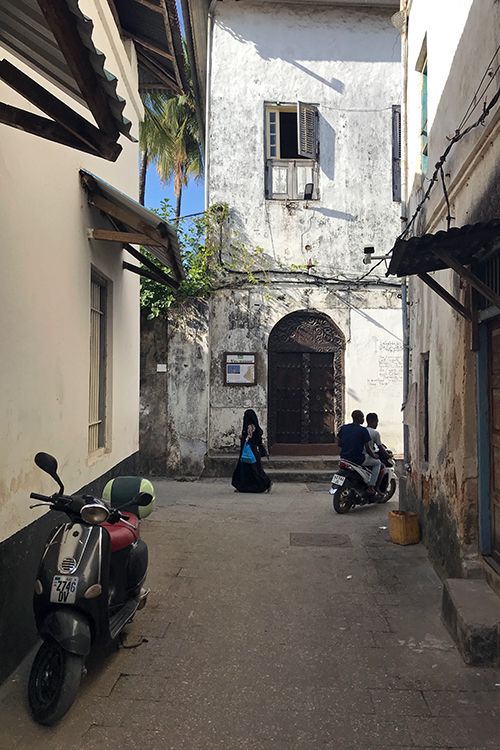
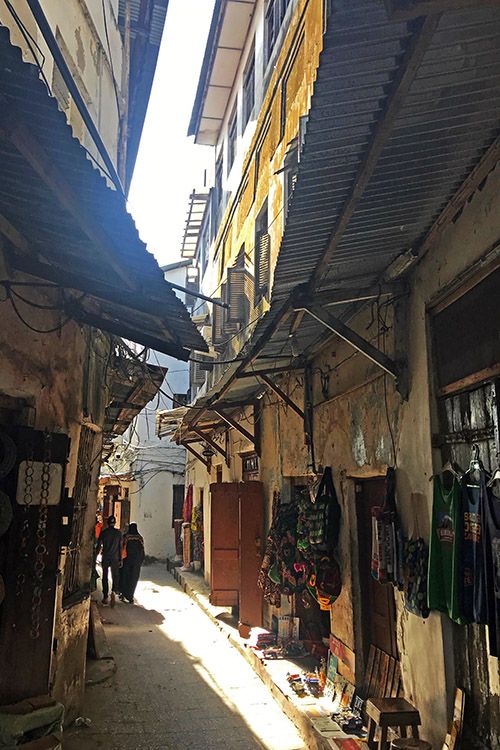
The old fort
The old fort (Arabic fort) is the oldest building in Stone Town. You will find this important tourist attraction near the House of Wonders and the boulevard along the sea. After the Arabs expelled the Portuguese in 1699, the Omani built the fort.
In the 19th century the fort served as barracks, but also as a prison where criminals were put to death. At the beginning of the 20th century the fort also served as a depot during the construction of the railway that connected Stone Town with the village of Bububu.
Today, the fortress with its high, brown walls and battlements is the headquarters of the Zanzibar International Film Festival. In the courtyard you’ll find some remains of a Portuguese church and another fortress. In addition, there are several stalls, a restaurant with local dishes, and a small arena where daily dance and music shows are held.
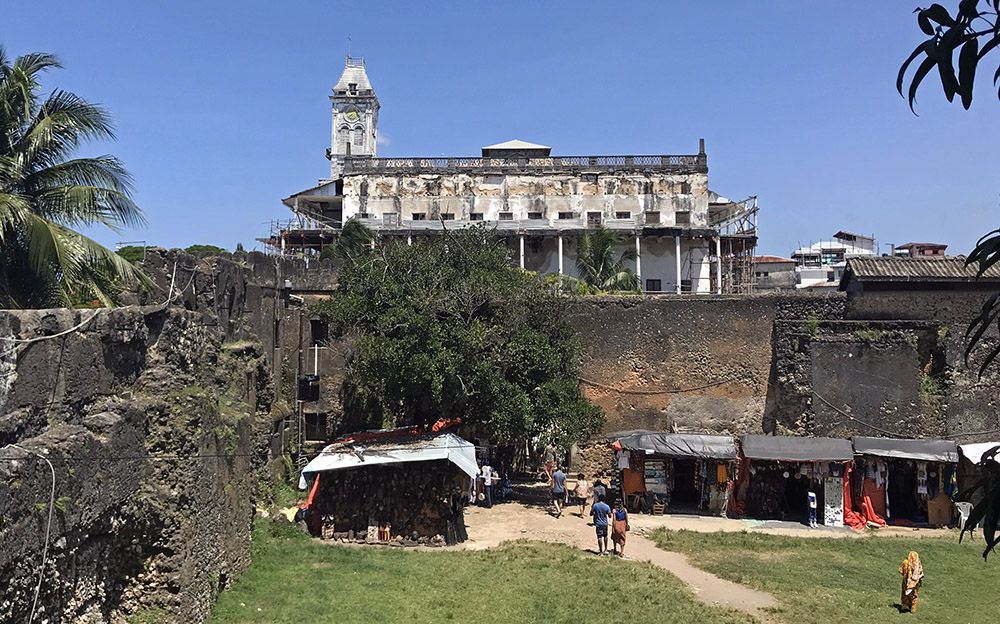
Palace museum
The palace museum (Beit el-Sahel) used to be the palace of the former sultan. It is one of the city’s most important historic buildings, located on the seafront promenade northeast of the House of Wonders. The palace was built at the end of the 19th century. Now it is a museum about the daily life of the royal family.
On the ground floor there is an exhibition about the period from 1828 to 1870 in which the sultanate concluded trade treaties between Zanzibar, the United States of America, Great Britain and France. You will also find the memorabilia of Princess Salme, the former Zanzibari princess who fled the sultanate with her husband to settle in Europe.
The exhibitions on the 2nd floor focus on the period from 1870 to 1896. This was the period in which Sultan Barghash provided modern facilities such as tap water and electricity. The 3rd floor consists of the modest living quarters of Sultan Khalifa bin Haroub and his two wives, who both had clearly different tastes in furniture.
Visiting the former slave market
In the 19th century, over 600,000 slaves were traded and shipped on the slave market in Stone Town. After the official abolition of slavery on Zanzibar, the Anglican cathedral arose on the market. On the church square you can still find a monument.
The altar of the cathedral stands exactly on the spot where slaves used to be chained to a tree. These slaves were beaten with a burning branch to test their courage. Those who didn’t cry or faint brought in more money. Except for the monument, there is nothing that reminds us of the slave market. Still, a visit to the square and the cathedral is definitely worthwhile.
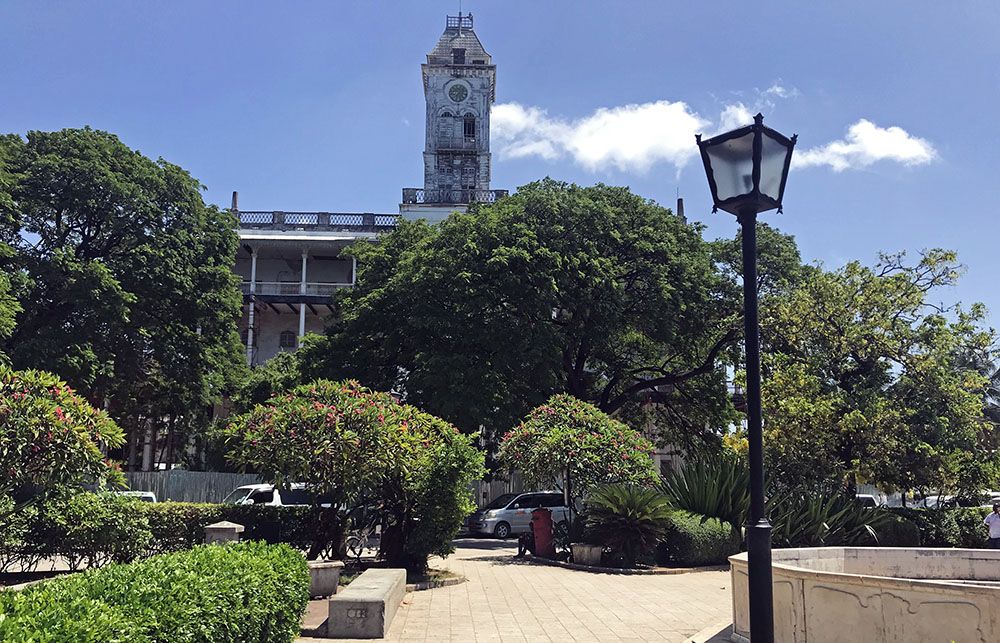
House of Wonders
The House of Wonders (Beit-al-Ajaib) is the largest and tallest building in Stone Town, and also one of the most famous landmarks. This former residence of the Sultan dates back to 1883. Restoration of the house took place in 1896 after the war between the British and Zanzibar. The House of Wonders was the first building in Zanzibar with electricity and the first building in East Africa with an elevator.
Since 2000 the large building has been a museum with two permanent exhibitions. One of them is about the culture in East Africa and that of Zanzibar and Stone Town in particular. The other exhibition is about East Africa in general. A ‘mtepe’ (traditional Swahili boat) occupies the entire courtyard. On the ground floor you still have an old car that belonged to President Abeid Karume.
Freddy Mercury Museum
On September 5, 1946, Freddy Mercury was born in the heart of Stone Town. The then singer of the British rock band Queen was still called Farrokh Bulsara. In the parental home where the family lived until 1963 before they moved to England, a museum has been dedicated to the pop legend since November 2019. The Freddy Mercury Museum is not very big but certainly interesting if you were a fan of Queen like us (in the past).
Livingstone’s House
In the northeast of Stone Town there is a small palace of Sultan Majid from 1860. At that time, Zanzibar was the hub and base for many European missionaries and pioneers who explored East and Central Africa. David Livingstone, one of the most famous explorers of that period, lived there while preparing his last expedition to the interior of Tanganyika in 1866.
After independence and the revolution, the building became the headquarters of the Tanzania Friendship Tourist Bureau, the forerunner of today’s Zanzibar Tourist Corporation.
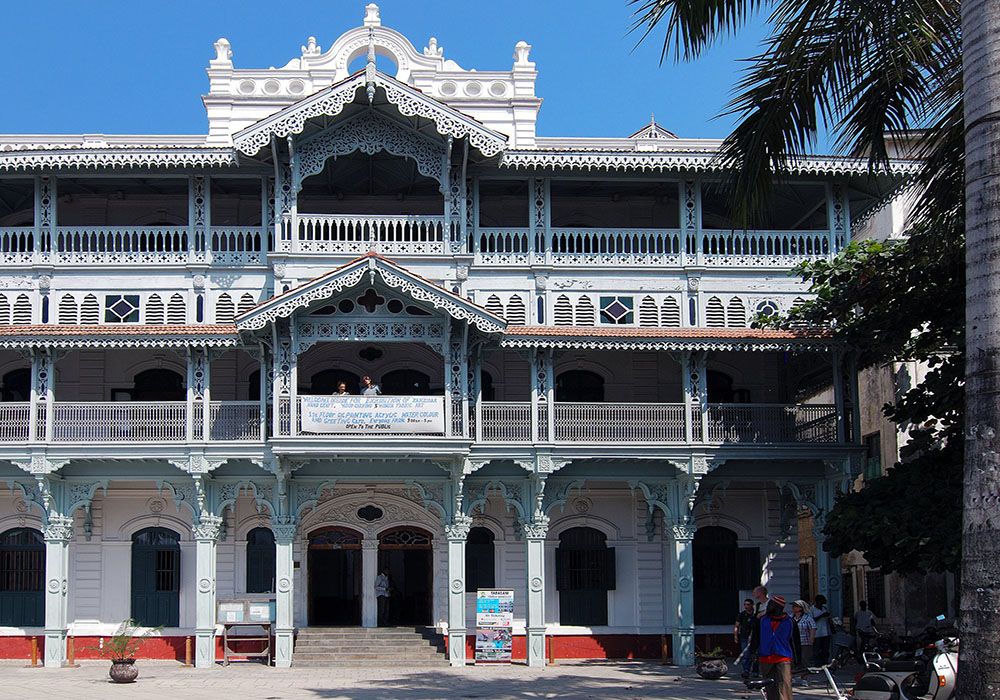
The old dispensary
At the end of the 19th century, a hospital was built in Stone Town especially for the poor, but later served as a pharmacy. It is one of the most beautiful buildings in Stone Town, with large carved wooden balconies, stained glass windows and neoclassical stucco decorations. Incidentally, the inside of the building is just as beautiful. There’s a covered courtyard with carved bridges from one floor to the other.
In the 1970s and 1980s the building fell into disrepair but was later beautifully restored. Today it houses the Stone Town Cultural Centre, as well as a small museum about the history of Zanzibar.
Hamamni Persian baths
The Hamamni Persian baths are located in a historic building on one of the many narrow alleyways in Stone Town. The public baths were built between 1870 and 1888 for Sultan Barghash bin Said. The baths were in use until 1920.
In the building you had several rooms with hot and cold baths, toilets, a barber and a restaurant. Hot water was provided by underground aqueducts. To be able to use the baths you had to pay an entrance fee. Because of this, the baths were something for the good bourgeoisie.
You can visit the baths, but some of them, including the restaurant, are no longer available because they have been turned into private residences.
Forodhani Park
Between the sea and the old fortress and the House of Wonders is Forodhani Park. The small, recently restored park is a wonderful place to recover from the heat after your walk along all the sights. It even gets crowded at sunset. Both locals and tourists come there to enjoy grilled fish and other Zanzibari recipes.
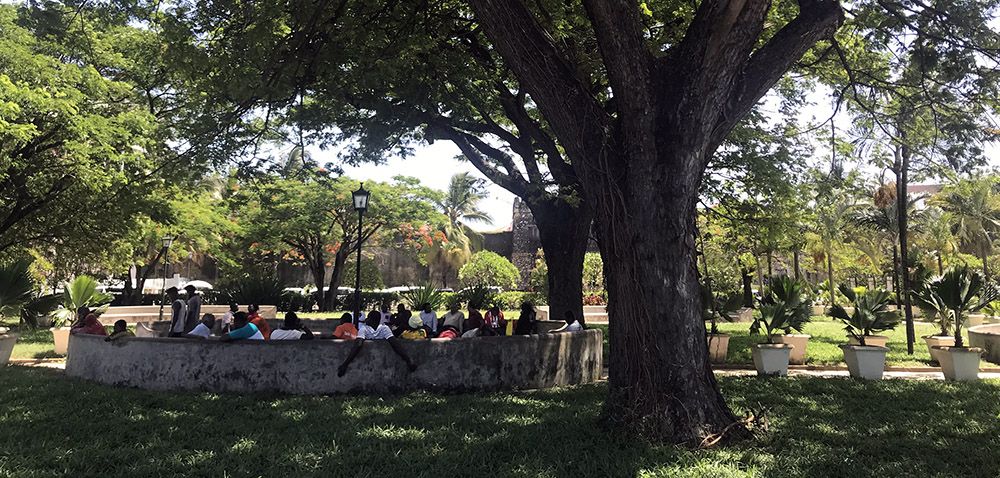
Practical matters
Guided tours through Stone Town
All sights are within walking distance of each other. You can see them by following the route as indicated in the picture below. Another option is a guided tour. You will learn a lot about the culture and history of not only Stone Town but also Zanzibar. Besides the historical sights, the guide will also take you to the fruit and spices market and various curio shops and bazaars. You can book a guided tour with GetYourGuide or TripAdvisor.
Accommodation
In Stone Town you generally have very nice (boutique) hotels in old but beautifully restored buildings. We ourselves were very pleased with the Antonio Garden Hotel. However, during our many walks through the old town we also saw other, at first sight very nice hotels. Think for example of the Dhow Palace, the Tembo House Hotel or the Mizingani Seafront Hotel.


